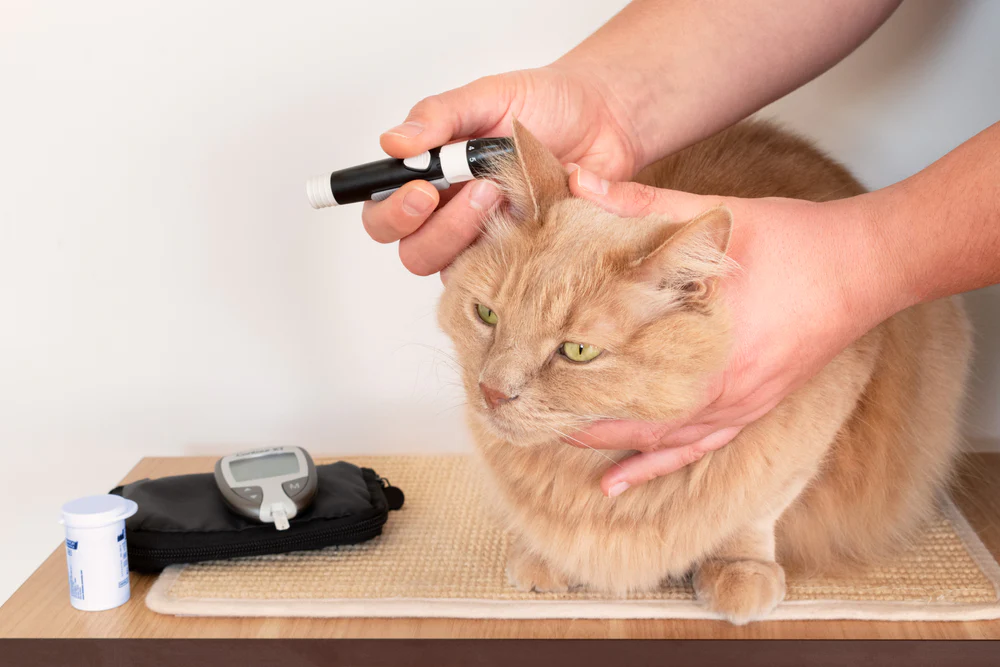As the prevalence of diabetes in domestic cats continues to rise, understanding the crucial role of diet in managing this condition becomes increasingly important. Proper nutrition can not only help in controlling the disease but also improve the overall quality of life for diabetic cats.
Understanding Diabetes in Cats
- Types of Feline Diabetes: The majority of diabetic cats suffer from Type II diabetes, characterized by insulin resistance and often linked to obesity. Type I diabetes, involving insufficient insulin production, is less common.
- Symptoms and Diagnosis: Common symptoms include increased thirst and urination, weight loss, and decreased appetite. Diagnosis typically involves blood glucose testing and a thorough veterinary examination.
Dietary Needs of Diabetic Cats
- Carbohydrate Content: Diets low in carbohydrates are essential as they have a significant impact on blood glucose levels. Low-carb diets help minimize the glucose spikes post meals.
- High Protein and Moderate Fat: A diet rich in protein and moderate in fat helps in maintaining muscle mass and managing weight, crucial for diabetic cats.
- Consistent Feeding Schedule: Regular feeding times, coupled with consistent meal sizes, aid in stabilizing blood glucose levels and can improve insulin therapy effectiveness.
Reviewing Top Cat Food Brands for Diabetic Cats
- Purina Pro Plan Veterinary Diets DM Dietetic Management: Formulated specifically for diabetic cats.
- Pros: High in protein, low in carbohydrates.
- Cons: Prescription required, may be more expensive.
- Price: Around $40 for a 10-lb bag.
- Availability: Veterinary clinics and specialized online retailers.
- Royal Canin Veterinary Diet Glycobalance: Offers a precise balance of nutrients for diabetic cats.
- Pros: Optimized for blood glucose support.
- Cons: Prescription required, contains some carbohydrates.
- Price: Approximately $50 for a 4.4-lb bag.
- Availability: Veterinary clinics and select pet stores.
- Hill’s Prescription Diet m/d Glucose/Weight Management: Low in carbohydrates and high in protein.
- Pros: Also aids in weight management.
- Cons: Prescription required, contains gluten.
- Price: About $30 for a 4-lb bag.
- Availability: Veterinary clinics and online pet stores.
- Wellness CORE Natural Grain Free: A non-prescription option, low in carbs and high in protein.
- Pros: Grain-free, no artificial additives.
- Cons: May be less specialized than prescription diets.
- Price: Around $42 for a 12-lb bag.
- Availability: Widely available in pet stores and online.
- Tiki Cat Puka Puka Luau Succulent Chicken: A wet food option that’s high in protein and low in carbs.
- Pros: Excellent moisture content, grain-free.
- Cons: Pricier than dry food options.
- Price: Approximately $1.50 per 2.8-ounce can.
- Availability: Pet stores and online.
The Role of Wet and Dry Food
- Wet Food vs. Dry Food: Wet food is often recommended for diabetic cats due to its lower carbohydrate content and higher moisture level, which is beneficial for kidney health.
- Hydration: Proper hydration is crucial in diabetic cats, and wet food can contribute significantly to their total water intake.
Homemade Diets and Supplements
- Preparing Homemade Diets: For owners opting for homemade meals, it’s vital to consult with a veterinarian or a pet nutritionist to ensure the diet is nutritionally balanced.
- Supplements for Diabetic Cats: Omega-3 fatty acids, antioxidants, and fiber supplements can be beneficial, but always seek veterinary advice before adding any supplements to your cat’s diet.
FAQs About Food for Diabetic Cats
- What is the best type of food for a diabetic cat? Low-carbohydrate, high-protein diets are generally best for diabetic cats. Wet food is often preferred for its moisture content.
- How can I switch my diabetic cat to a new diet? Gradually introduce the new food over several days to a week, mixing it with the current food to prevent digestive upset.
- Can diet alone manage diabetes in cats? Diet is a crucial component, but many diabetic cats also require insulin therapy. Consult your vet for a comprehensive treatment plan.
- Are grain-free diets suitable for diabetic cats? Grain-free diets can be suitable if they are low in overall carbohydrates.
- How important is feeding consistency for diabetic cats? Very important. Consistent feeding times and amounts aid in stabilizing blood glucose levels and make insulin therapy more predictable and effective.
Conclusion
Managing feline diabetes requires a well-thought-out nutritional approach. The right cat food, tailored to the needs of a diabetic cat, can significantly aid in controlling blood glucose levels and maintaining overall health. Always collaborate with your veterinarian to select the most appropriate diet for your diabetic cat.

Jane Doe, a veterinarian with over 10 years of experience, combines her deep knowledge of animal health with a passion for pet welfare at PetsPonder.com. With a DVM degree and a commitment to the latest in veterinary science, Jane Doe offers reliable, compassionate advice to help pet owners make informed decisions for their furry companions.

Leave a Reply